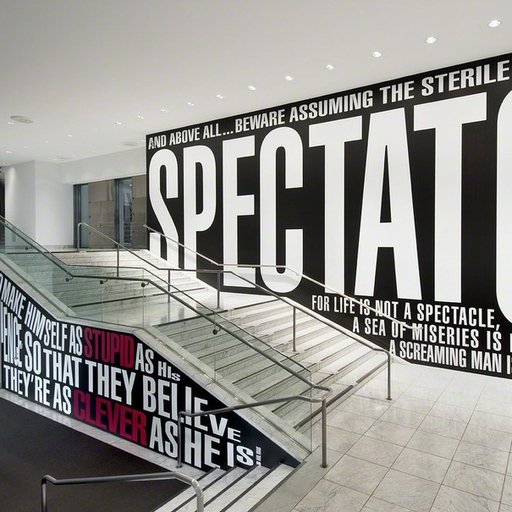We get it: art can be daunting. There’s an image of the art world as a conglomeration of names, periods, galleries, and movements to memorize, outsized characters to glad-hand and woo, an international network of fairs and institutions to navigate, and sky-high prices to contend with. But here’s the secret few art-world gatekeepers will tell you: there’s never been a better time to start collecting art. With the rising popularity of contemporary art and the current spate of art-world services and technologies that have arisen to meet this growing demand for information, logistics, and supply, art lovers who want to get in on the action have access to reliable and readily available tools to make the adventure of collecting smooth and simple, no matter your experience. Here, we’ll lay out a few of the major considerations would-be art patrons should think about when starting a new collection. As you’ll see, it’s mostly a matter of using your common sense and a few key tools along the way.
Why start a contemporary art collection in the first place? It’s simple, really: great art makes you think, feel, and see in new and interesting ways. Having artworks in your home enriches your daily life while also adding visual interest to your space and showing off your aesthetic sensibilities—what’s not to love? Note that not every piece needs to be a soul-searching masterwork; pretty pictures and attractive sculptures will always be in style, though you may find, upon spending more time with a piece, that it begins to open up in ways you wouldn’t at first expect. It’s one of the most rewarding parts about collecting the art you love, and the reason most of us get into it in the first place. And, if the piece just so happens to match the couch, so much the better.
Of course, there’s also the human element to art collecting. By patronizing an artist’s work, collectors become crucial parts of said artist’s legacy. This works in several ways, depending on where the artist is in their career. Younger artists and those just getting their start (often called “emerging” artists in this context) rely on strong early support in order to continue making and developing their work, while those later in their careers may have already established themselves as being of art-historical import, making their works bona-fide bits of contemporary culture and collectors are the enlightened patrons who allow it to happen. Such “blue-chip” artists represent the smartest investments collectors can make, as their works will increase in value as their career continues (though they also represent a more expensive cost of entry than their far cheaper emerging counterparts).
Indeed, these days art is often discussed as an investment—which of course it is. Great art appreciates in value over time, and collectors stand to make a pretty penny if they have a good eye and a feel for the market. But it’s important to note that tastes can and do change over time. A collector buying an artwork solely for its potential resale value risks winding up with a work they can’t stand to look at if the market dips. It’s generally far better to invest in work you love, ideally from the beginning of a favorite artist’s career when the work is most affordable. This way, no matter how the market may twist and turn, you’ll always be happy with your collection.
Finally, there’s the fun of it all. As we alluded to earlier, the art world is a social world, filled with opening showings, private viewings, public art fairs, and all manner of outlandish and fascinating performances, exhibitions, parties, dinners, and the like. Don’t let the image fool you: it’s easy to get an invite once you make a few inroads into this whacky realm. Studio visits with artists and gallery tours with dealers are crucial to the success of all parties, and they’re a casual and informative way to meet the smart people who share your passions. Many a lifelong friendship has been forged through art, and there’s certainly no shortage of interesting people to meet. This is one place where the many strands of 21st-century culture coalesce—it’s fun to be part of this ferment.
Now that we’ve got the “whys” out of the way, it’s time to turn to a few of the “whats.” It’s hard to give general advice about something as personal as art collecting, but we have a few tried-and-true tips to help most any collector.
1. KNOW YOUR TASTE
What kind of art catches your eye and get your mind spinning? It’s the most important question a collector can ask, forming the basis of all great collections. Whether you like Pop art , portrait photography, landscape painting, or works by Native American artists , focusing on specific kinds of art will help narrow your search and build better relationships with top dealers and artists. Of course, you can also collect with your gut (plus a bit of assistance from a trusted art advisor) to build a multifaceted collection that expresses your diverse tastes—there really are no rules here.
Further reading:
From Abstract to Landscape: How To Appreicate Art
2. CONSIDER YOUR SPACE
Most people begin buying art to show in their home, which makes logistics important: massive steel installations don’t always fit into the dining room (or with its decor). Think about where and how you’ll be displaying your new treasures and how they’ll hang (or perhaps artfully clash?) with what’s already there. For those dedicating time to building their holdings (rather than just filling a wall or two), storage may be necessary—there are now plenty of companies that offer facilities as well as art moving and installation.
Further reading:
5 Tips for Displaying Art in Small Spaces
How to Perfect the Salong-Style Hang: An Easy Guide
How to Maximize Your Wall Space: 4 Golden Rules for Hanging Art
3. PROTECT YOUR LEGACY
As mentioned above, art can be a big investment. Do everything you can to guard against misfortune by looking into proper display and preservation techniques. Also, check if your insurance covers art—the last thing you’d want is a bit of water to render your favorite piece worthless. Finally, consider how your collection will live on; many collectors donate work to museums, either temporarily for exhibitions or permanently after their passing.
Further reading:
How to Practice Safe Collecting: 7 Tips for Protecting Your Precious Art
The Art of Art Insurance: A Practical Guide for Artists, Galleries, and Collectors
4. UNDERSTAND YOUR ROLE
Collectors are crucial to the art ecosystem’s survival, but the niche you occupy will vary greatly depending on the kind of collector you aspire to be. Will you support emerging artists during their crucial early years? If so, you’ll be central to their success and will have access to their work early in the game, great for scoring high-quality works that will grow in value over time. If you want a piece of more established figures, it may be wise to start with an edition or print (which are typically more affordable than one-of-a-kind originals) to get a taste for their market.
Further reading:
Our Guide to Conscious Collecting: Support the Causes You Care About with Art
5. DO YOUR RESEARCH
As we’ve hopefully explained, art collecting can be fun, but it’s also a serious business. The works you’ll be buying are almost always the products of years of hard work and deep thought on the part of the artists and those around them. Reading up on art history, movements, and current trends in the art market will help you to both make smarter buying decisions as well as impress your friends with your cultural savvy, but perhaps more importantly, help you gain a deeper and more personal understanding of the works you’re buying. After all, that’s really what all this is about: finding objects and images that enrich your life.
Further reading:
- read interviews with artists, curators, and collectors
- read Excerpts from Phaidon's art history
Books
Feeling inspired to start your collection? We have some directions to point you in! On Artspace.com , use browsing filters to search for artworks that meet specific characteristics, like color, size, and style or movement. (It's pretty intuitive, but we also have a nifty guide to help you through it if you need some help.) Not finding what you're looking for? Our dedicated Artspace advisors would love to hear from you! Just send them an email at services@artspace.com and they'll work with you to find the perfect fit. And last but not least, Artspace Magazine provides a wealth of information on all matters art. Happy collecting!



























